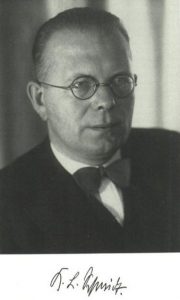 While doing a little background research on folklore and oral tradition, I happened upon something written by David Aune that confused me. Aune edited The Blackwell Companion to the New Testament, and wrote the chapter on form criticism (pp. 140-155).
While doing a little background research on folklore and oral tradition, I happened upon something written by David Aune that confused me. Aune edited The Blackwell Companion to the New Testament, and wrote the chapter on form criticism (pp. 140-155).
You probably recognize Wiley-Blackwell’s well-regarded Blackwell Companions to Religion series. Generally, I admire their clarity and reliability, so when I read Aune’s remarks regarding Karl Ludwig Schmidt, I was taken aback.
One of the corollaries of the view that the Jesus tradition originally circulated in relatively short oral units is that the framework of the life of Jesus in the gospels has no claim to historicity. K. L. Schmidt, who did not himself use the term “form criticism,” argued that Mark was made up of short, originally independent episodes or pericopae that were linked together editorially by a variety of chronological and geographical bridge passages inserted by the evangelist with the intent of creating a connected narrative. (Aune 2010, p. 142, emphasis mine)
The problem, as you can see immediately, is that Schmidt did use the term form criticism (Formgeschichte). In fact, the editors of the RGG II specifically asked him to write the section on it (see volume II, “Formgeschichte” pp. 639-640). He also used the term in his 1923 work, The Place of the Gospels in the General History of Literature, acknowledging the methodology in section A.5 — “Methodologisches: Literarkritik und Stilkritik (Formgeschichte).” So, what could Aune have meant? Continue reading “What Sort of Work Is K. L. Schmidt’s “Framework”?”
